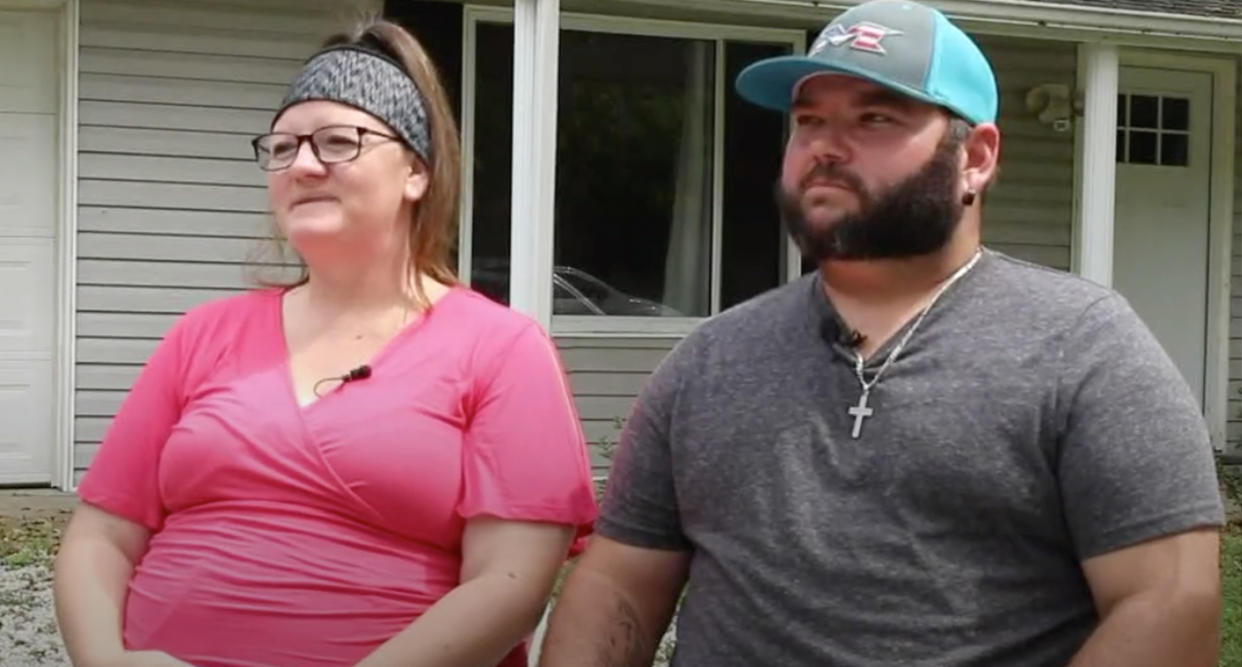Unborn baby, mother test positive for amphetamines after parents discover they're living in former meth house

For Elisha and Tyler Hessel, who are expecting their first child, it should have been the happiest time of their lives. But blood tests during a routine prenantal check-up revealed some shocking news: Elisha and her unborn baby tested positive for amphetamines.
In trying to sort out how this could have happened to Elisha and their unborn child, the Missouri couple started to suspect their home as the culprit after speaking with neighbors. "Just through normal conversations as we got to know them a little better, they said they were so happy to finally have 'normal' people move in next door," Hessel told CBS News. "They had also mentioned that the police were there for a possible drug bust type situation."
So Elisha decided to purchase a kit online to test for drug contamination. “It did come back with unsafe levels in the home,” she told KSDK.
As Elisha dug deeper, she discovered that her beloved house was listed on the Jefferson County database for meth seizures in 2013. The couple had unknowingly moved into a house that had been a former meth lab, and Elisha says they were never informed of this before purchasing the house. (According to Rehabs.com, which analyzed data from the U.S. Drug Enforcement Agency on meth lab seizures, Missouri topped the list with 27.6 meth labs per 100,000 residents.)
Jefferson County undersheriff Timothy Whitney told KSDK that when police went to the house in 2013 — years before the Hessels bought the house — after receiving a tip about a possible meth lab, “there wasn't evidence that day at that time to suggest that [meth] distribution or manufacturing was going on.”
However, Whitney also told KSDK: “I never thought six years down the road, you know, of it impacting an unborn child.”
The couple decided to hire an environmental inspector, Thomas Alford of Enviropro, to do further testing, which revealed that the house’s ventilation system was highly contaminated with methamphetamine and meth-making residue, reports KSDK.
“As these materials off-gas and they're coming through paint… they're coming out of cabinetry, they're coming out of flooring,” Alford told the news outlet. “It's spread through your HVAC system. It takes air from everywhere, turns it around, you inhale that, it gets into your lungs, it spreads out. And then all of a sudden, one day, you take your test and there you are. You have it.”
When methamphetamine is made, it contaminates “all surfaces in homes,” according to a 2017 Mortality and Mortality weekly report by the Centers for Disease Control and Prevention. In other words, the contamination is everywhere. The CDC report also stated that if the contamination is not properly cleaned and removed from the home, residents can be “unknowingly exposed to residues.”
Although law enforcement removes chemicals and containers after a meth lab is discovered and the home is supposed to be professionally cleaned, many properties remain uncleaned, according to an investigation by The Missourian. Even in homes that are cleaned, “it is possible a small amount of contamination is left on surfaces and in absorbent materials (carpets, furniture), sinks, drains, and ventilation systems,” according to the Missouri Department of Health and Senior Services’ (DHSS) Bureau of Environmental Epidemiology, which offers meth lab clean-up guidelines for home buyers. “The vents, ductwork, filters, and even the walls and ceilings near ventilation ducts can become contaminated.”
The department added: “Though found in small amounts, meth lab contaminants may pose health threats to persons exposed to them.”
It’s not clear how long meth contaminants can last in a home. “This is one of those questions we don’t have a good handle on,” Glenn Morrison, PhD, a professor in the department of environmental sciences and engineering at the University of North Carolina, tells Yahoo Lifestyle. “Based on our lab work, it certainly could take years for meth to slowly release from building materials. The extent to which it will still be a problem depends on how much meth was released into the house during laboratory operation.”
He adds: “Clothing and other textiles absorb meth to a large extent. This can then be an important source of meth for toddlers that ‘mouth’ textiles.”
For the Hessels, they had to leave their home and are staying with Elisha’s mother as they prepare for their baby’s January due date. The family shared their story on their GoFundMe page, which has raised more than $3,500 toward their $100,000 goal. The money will be used for the extensive process of removing the drug contamination from their house by stripping it down to the studs, putting in a new HVAC system, and rebuilding.
Read more from Yahoo Lifestyle:
This woman's face transplant is failing — what does that mean?
Woman in semi-comatose state after using skin cream from Mexico
Follow us on Instagram, Facebook and Twitter for nonstop inspiration delivered fresh to your feed, every day.

